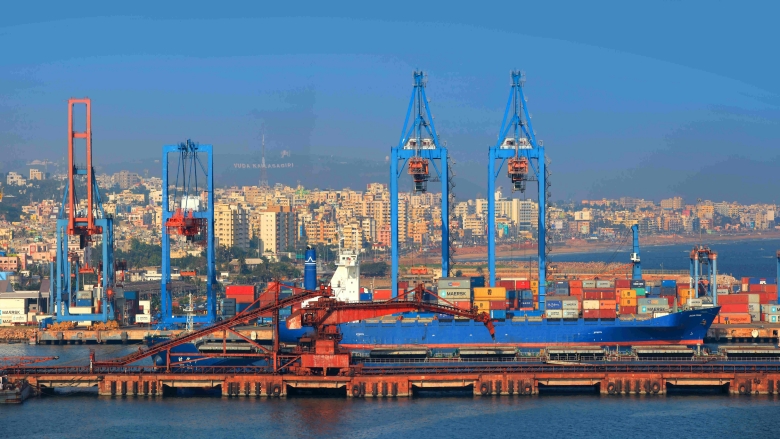AT A GLANCE
India is one of the fastest growing economies of the world and is poised to continue on this path. With aspirations to achieve high middle-income status by 2047—the centenary of its independence, the country is building on strong foundations of economic growth and social progress.
India has achieved remarkable development over the past two decades. Since 2000, the economy has nearly quadrupled in real terms, and per capita income has almost tripled. Its share in the global economy has doubled—from 1.6 percent in 2000 to 3.4 percent in 2023—making India the world’s fifth-largest economy. This growth trajectory has been accompanied by a substantial reduction in extreme poverty (from 16.2 percent in 2011-12 to 2.3 percent in 2022-23) and a significant expansion in infrastructure and access to basic services.
Despite these achievements, critical development challenges persist. These include high levels of informality in the labor market, low female labor force participation, unequal access to quality health and education services, regional disparities in development outcomes, and increasing vulnerability to climate change and natural disasters. Addressing these complex challenges will be essential as India looks ahead to its centenary milestones.
To achieve its vision of becoming a high-income economy by 2047, India will need to sustain an average annual growth rate of 7.8 percent over the next two decades. This will require bold and sustained reforms to increase both public and private investment (increasing the real investment rate from around 33.5 percent of GDP to 40 percent by 2035), create conducive conditions for the generation of more and better jobs—particularly for women through labor-intensive sectors—and drive productivity. Simultaneously, the country must deepen structural reforms to strengthen infrastructure, improve health and learning outcomes, boost manufacturing and digital innovation, while continuing to safeguard macroeconomic stability. Unlocking India’s demographic dividend will depend on investing in human capital and raising female labor force participation from 35.6 percent to 50 percent by 2047. Achieving inclusive and sustainable growth will also require coordinated action across all states and sectors.
The World Bank is partnering with the Government of India to support the country’s vision of Viksit Bharat by 2047, by supporting policy reforms, institutional strengthening, and strategic investments that promote green, resilient, and inclusive development. Together, we aim to help build a more prosperous and equitable future for all Indians.
Economic Outlook
India continued to be the fastest-growing major economy, with a growth rate of 6.5 percent in FY24/25, despite a challenging global environment.
Growth was bolstered by robust activity in agriculture and sustained service sector performance, which counterbalanced the slowdown in the industrial sector. Agricultural growth accelerated to 4.6 percent, up from 2.7 percent the previous year, thanks to favorable weather conditions. Meanwhile, while services growth softened slightly, it remained strong.
On the demand side, growth benefited from a surge in private consumption, supported by easing inflation and strengthening rural demand. Furthermore, export growth surged to 6.3 percent, a significant increase from 2.2 percent the prior year, primarily thanks to the strong performance of service exports. Within the services sector, the export of software and business services was instrumental in this robust expansion.
Average inflation declined to 4.6 percent, from 5.4 percent in FY23/24, opening space for easing monetary policy.
The improvement in urban employment following the pandemic has continued across all demographic groups, including males, females, and youth aged 15-29. The overall urban unemployment rate has dropped to 4.9 percent, marking its lowest level since the first quarter of FY18/19. For urban men, the unemployment rate stands at 5.8 percent, while the unemployment rate for urban women decreased to 8.1 percent. Additionally, the urban youth unemployment rate has fallen to 16.1 percent. The urban worker population ratio has also improved for all groups, indicating that the reduction in unemployment is primarily due to job creation rather than a drop in workforce participation.
Growth is expected to reach 6.3 percent in FY25/26, due to heightened global trade policy uncertainty and financial sector volatility, which are expected to negatively impact domestic investment and global growth. Shifts in trade policy and the anticipated global economic slowdown are also expected to reduce external demand for India’s goods and services.
Growth should gradually converge back to potential over FY26/27-FY27/28, assuming global uncertainties are resolved in an orderly fashion.
Trade will play a critical role in creating jobs and boosting growth
To support growth and job creation, India will need to continue harnessing its global trade potential and increase demand for India’s exports. The successful completion of free trade agreements (FTAs) with key trading partners could improve market access for Indian goods and services and strengthen both business and consumer confidence. The recently concluded trade agreement on merchandise and services with the United Kingdom signaled India’s willingness to reduce tariffs (matching zero-tariff rates with trade partners), particularly in more labor-intensive sectors such as textiles, apparel, and footwear, as well as in electronics and green technology products.
A three-pronged approach—reducing trade costs, lowering trade barriers, and deepening integration into global value chains—can help India achieve its ambitious goal of $1 trillion in merchandise exports by 2030.
Greater openness to trade will enhance India’s technological capabilities, improve productivity, spur economic growth, and build long-term economic resilience.
Additionally, government initiatives such as rationalizing inverted duty structures, continuing the implementation of Production-Linked Incentive (PLI) schemes, and the announced deregulation drive are expected to positively impact the economy.
Last Updated: Oct 06, 2025



